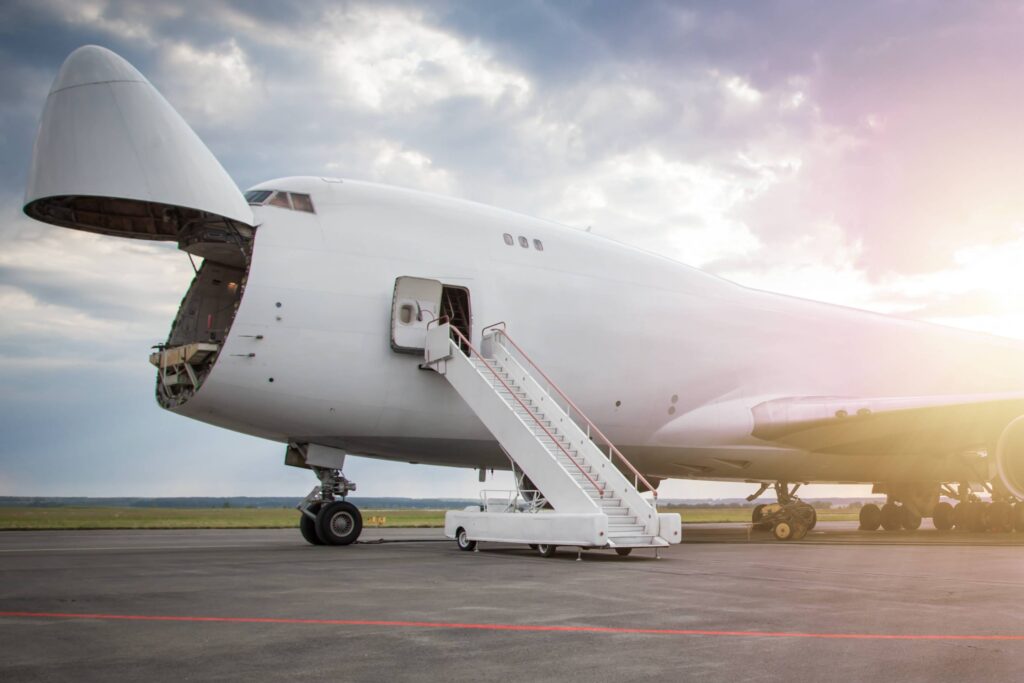Emerging trends
Helping Freight Forwarders Beat Fuel Price Hikes

Seven ways CharterSync can help clients maximise flexibility to lower costs
It’s no secret that rising fuel prices are an ever-growing headache for freight forwarders. Fuel costs account for approximately a quarter of operating costs and the potential for surcharges in the coming months has been compounded by recent global macroeconomic pressures. These include changes in airspace restrictions and imbalances in aircraft supply.
As freight operators know, routes over Russia between Asia and Europe have historically been the most optimal for flight time. Therefore, improving fuel consumption. With the current need to adapt to more southerly routes, flight times could increase by up to one hour. This additional time en route creates significant fuel burn and cost implications for air cargo customers.
What’s more, the ultra-low fuel prices of the past two years helped airlines market their passenger aircraft as auxiliary freighters. Even though passenger aircraft hold fewer goods by volume than pure freighters, employing “preighters” [passenger freighters] allowed the industry to alleviate belly capacity shortages significantly. Sadly, the increase in fuel prices, makes the economics of running preighters more challenging – with substantial consequences for aircraft supply. This imbalance in supply and demand will serve as another contributor to increasing rates for freight forwarders.
The good news is that freight forwarders can minimise inefficiencies in their operations through digitalisation.
As an air cargo charter innovator, CharterSync is focused on helping freight forwarders beat fuel price hikes. Here are some of the ways we assist customers:
1. Smart use of airports in proximity to cargo location
Our intelligent digital charter platform automatically uses geolocation data to match the closest aircraft to the cargo’s point of origin. This minimises the added fuel burn and costs that occur when an aircraft for a charter must be ‘positioned’ from its current location to the cargo’s departure airport.
2. Choosing the best aircraft for the mission
By comparing the speed, price and capacity of multiple aircraft types, our platform enables freight forwarders to choose the ideal option. For example, an aircraft such as the Pilatus PC-12 offers significantly lower fuel burn per hour compared to its nearest rivals, and with an average fuel burn of 180kgs per hour, this equates to almost 10 x lower CO2 than a large jet.
3. Prioritising end-to-end routing
With all the benefits of air cargo charter at our fingertips, CharterSync pinpoints routes to airports closest to the end destination. This expands options for forwarders without having to rely on flying to key carrier hubs. This allows our customers to choose more direct routes and avoid multiple scheduled connections for optimum fuel and cost savings.
4. Maximising operational efficiency on the ground and in the air
Thanks to our pioneering technology, our dedicated team of air charter experts can help forwarders make swifter, better-informed decisions, boosting supply chain reliability and operational efficiency, while providing much-needed reassurance in the speed of turnaround, precise flight schedules and ETAs.
5. Shipment consolidation
By using CharterSync, freight forwarders can keep their costs low by consolidating multiple cargo shipments onto one flight, rather than scheduling multiple flights as is often the case with manual booking processes.
6. Transparent pricing
CharterSync provides complete transparency for clients to ensure they are never surprised by hidden costs. Freight Forwarders should always be given a thorough understanding of what is included or excluded from the cost of a charter booking.
7. Fuel-saving airline operations techniques
By encouraging fuel-saving airline operations techniques such as constant descent approaches and single-engine taxiing while on the ground, we can help forwarders find ways to further reduce their operating costs from within the cockpit.
To learn more about how CharterSync can help you, get in touch! Our friendly, world-class sales and operations team are on hand 24/7 to offer round the clock support.

NEWSLETTER